



This year’s first ever fully virtual meeting – August 29 through September 4 – was a great success with many positive comments! The virtual platform and addition of IUGA Annual Meeting scholarships also allowed many practitioners who are typically unable to afford attendance at a physical meeting to access the first-rate education and scientific content this meeting provided. This year we had 1161 attendees, 555 accepted abstracts, and 4 workshops. We are pleased to provide a snapshot of the meeting with summaries of our main sessions in this issue of the IUGA Spotlight.
If the summaries provided in this issue inspire you to re-watch any of the sessions, your attendee link can still be used through the end of the year to access the meeting sessions on-demand. If you missed the meeting entirely, you can purchase full on-demand access to the meeting content and view at your own leisure! Visit our meeting website to purchase your 3-month access today!
Thank you to the following volunteers for contributing summaries to this issue: Carlos Aguirre, Aparna Hegde, Catherine Hudson, Debjyoti Karmakar, Norah Macias, Gemma Nightingale, Carmen Ortiz-Roque, Elizabeth Robison, Jessica Jarumi Martínez Rodríguez, and Yu Hwee Tan.

Presenter: Ranee Thakar
In an inspiring address that resonated with humility and the spirit of collaboration, Dr. Ranee Thakar began by thanking the relevant committees for putting together the virtual meeting in difficult times. She spoke of her manifesto as President, the IUGA strategic plan, and how the opinions of IUGA members expressed in the membership survey were addressed. She thanked the IUGA Board, Committees, SIGS, FIUGA, Advisory Board, IUC Committee and Status Plus for their work and other international organizations for collaborative efforts. She expounded on IUGA Academy, the IUGA surgical database, patient advocacy efforts, E-discussion forums, the updated IUGA newsletter, Fellowship Directors’ Consortium, pelvic floor imaging course, eXchange programs and webinars conducted, and new guidelines, statements and opinion papers published. She announced various awards, including the Lifetime Achievement Award bestowed upon Dr. Harry Vervest. She spoke of the increased outreach of IUGA (38 affiliate societies), reduced fee structures for developing countries and reduced carbon footprint. Lastly, she spoke of her personal journey and thanked her family and mentors.

Presenter: Suzie Bailey
In a thought-provoking Ulf Ulmsten Lecture, Ms. Suzie Bailey spoke of the need to lead by creating a culture of compassion, inclusion, and collaboration to drive innovation. She invoked the memories of her grandmother, Florence Musgrave, and her team members at St. Mary’s Hospital, who influenced her realization that despite all advances, health care is fundamentally a people business. Given the problems of staff shortages, excessive workloads, and discrimination against ethnic minorities, stress, burnout and staff attrition are inevitable. Hence, compassionate and inclusive leadership that involves paying attention to staff, having a shared understanding, empathizing, and helping team members to grow needs to be adopted. Collective interdependent leadership is necessary where leadership is the responsibility of all. Teamwork on the fly is needed where teamworking skills are transferred to multiple teams with defined goals, clear communication and regular check-ins. Unconditional teamwork, where team members communicate, share, show up and never worry alone, needs to be promoted.
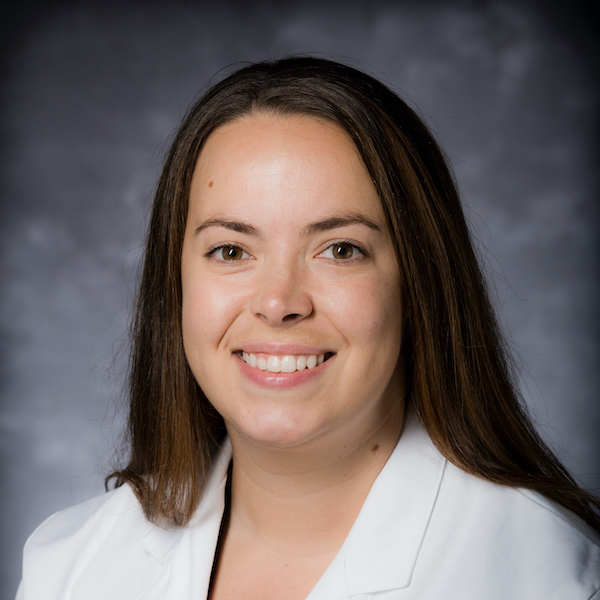
Presenter: Denis Mukwege
Only moments into this year’s keynote lecture, it became clear that we were in the presence of a truly great man who deserves his title as Nobel Prize Laureate 100 times over. Dr. Denis Mukwege deftly took us through his 20-year journey of tireless commitment to the care of over 96,000 victims of gender-based violence at his Panzi Hospital in the Democratic Republic of Congo. He walked us through the holistic approach to healing these women and children who are victims of rape as a weapon of war. At Panzi Hospital, survivors receive integrated psychological and medical/surgical care, legal assistance and socio-economic support. This model has now been implemented in countries in Africa, Asia and Europe. At times, his words and slides were difficult to see and hear given the unimaginable trauma that these women have survived. But his willingness to live this reality every day and bring awareness to us all is a crucial step in protecting the “common humanity” of us all as he so deftly puts it.

Moderator: Kirsten Kluivers
PRO: Dudley Robinson
CON: Sanne van Leijsen
Urodynamic testing is the accepted method of investigating urinary incontinence. However, there are no clear guidelines for its use prior to urogynecological surgery. Those in favor of urodynamics before incontinence surgery argued for testing as the results may change management, such as prior to most invasive treatments for urinary incontinence and pelvic organ prolapse, after treatment failure, or in cases where more information is needed in order to plan further therapy or surgery. Those opposed argued that urodynamics is expensive and invasive. Many patients cannot pay for it, and some insurers cannot or do not cover it. Some urogynecologists consider urodynamics essential, while others only request it in complicated cases.
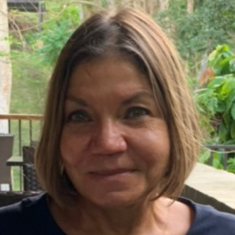
Moderator: Anna Rosamilia
PRO: Hugo van Eijndhoven
CON: Natarajan Rajamaheswari
On the pro side, 60% of women prefer an equally effective uterine preserving prolapse treatment. Respect for patient’s preferences is the strongest argument. Hysterectomy is disruptive to the neurovascular and supportive pelvic structures. Comprehensive 2018 studies revealed that vaginal hysterectomy and uterosacral ligament suspension (USLS) had significantly more surgical failure and blood loss than sacrospinous ligament hysteropexy (SSH), and higher recurrence and expense than the Manchester-Fothergill. Uterine preservation has an equal or better outcome.
The opposing side presented Stage 4 uterine POP images and summarized studies from 2003-2015. Compared to sacral hysteropexy, hysterectomy coupled with native tissue repair had comparable surgical success, a lower reoperation rate and no mesh exposure. Compared to mesh hysteropexies, concomitant hysterectomy had decreased the mesh exposure.
The moderator noted success rates seem equivalent if good apical suspension is performed. Geographical variation in the severity of POP may influence physicians’ and patients’ treatment preferences.
The audience poll showed 54% of respondents more frequently perform uterine preservation for POP while 65% of their countrywomen are POP-hysterectomized.* Reasons cited included patient preference (37.7%), physician preference (36.8%), non-POP conditions (25.6%).
*Chi square = 5.7, P = 0.02

Moderator: Maria Bortolini
PRO: Baerbel Junginger
CON: Rhonda Kotarinos
Rhonda Kotarinos (US) explained the importance of an individualized program of pelvic floor muscle exercise for improving the specific deficiencies in a woman’s pelvic floor structure or function. Since pelvic floor muscle exercises are over utilized and may be contraindicated for some women, as described in current studies, they should not be mandatory.
In favor of mandatory pelvic muscle floor exercises before surgery, Baerbel Junginger (Germany) said, "Everyone can benefit from doing pelvic floor exercises." Every patient needs the correct performance of a pelvic floor muscle contraction. In the case of a large prolapse below the levator plate, surgery only cures the symptoms. Pelvic floor physiotherapy, as shown through research, can help women improve their quality of life in addition to strengthening their muscles.
In summary, successful outcomes require each case to be viewed individually and a personalized program to be developed.

Moderator: Ranee Thakar
PRO: Robert Freeman
CON: Abdul Sultan
Dr. Robert Freeman presented in favor of caesarean section, noting it will prevent OASIS but the recent EPIC trial showed no evidence of difference in outcomes between caesarean section and vaginal delivery if the patient has asymptomatic OASI on ultrasound. There has also been a change in maternal population with increasing age, BMI, and increased estimated fetal weight all adding to increased risk of forceps deliveries and pelvic floor dysfunction. Thus, caesarean may be safer in these populations.
It can be argued that caesarean section risks are overstated when discussed with women, e.g. risk of placenta accreta is low (0.2%) if women are planning an average of 2 children only. Women must be at the center of joint decision-making regarding mode of delivery.
Dr. Abdul Sultan rebutted that it would be a breach of duty to offer elective caesarean sections to everyone, as there are immediate risks, delayed risks, and risks in future pregnancy with caesarean sections. There is a significant increase in morbidity with caesarean, e.g. accreta, hysterectomy, and childhood asthma/obesity in the long-term. The twin pregnancy trial/Term Breech Study showed no difference in anal incontinence between vaginal delivery vs caesarean delivery. The ProLong study showed that caesarean was not protective against anal incontinence; the Cochrane review as well as a systematic review by Nelson et al (2019) showed that caesarean section should not be used as criteria for preventing anal incontinence. The 2020 EPIC study showed that in women with asymptomatic OASI diagnosed by ultrasound, caesarean section had no impact on anal incontinence 6 months post-delivery. Instead, a guideline (Sultan 2018) for OASIS patients using anorectal manometry and endoanal ultrasound criteria should be used to guide subsequent delivery.
It is important to counsel women in the antenatal period regarding mode of delivery. Obstetricians have a legal obligation to discuss mode of delivery and the risks involved. Informed shared decision-making is vital, especially early in the antenatal period.
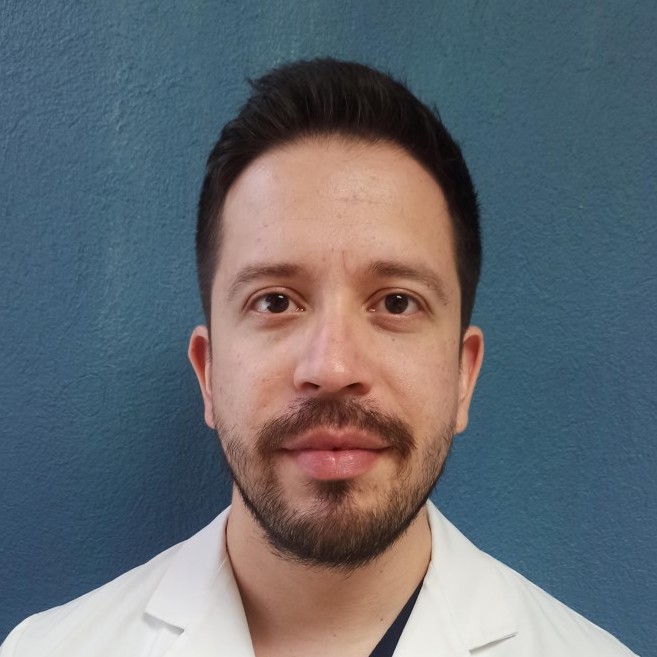
Moderator: Grace Chen
Presenter: Aparna Hegde
Pelvic floor disorders affect 1 in 4 women living in lower-middle income countries and have a far bigger socioeconomic impact than in more developed countries given the difficult social situations faced by women in more traditional cultures. Treatment for urogynecologic conditions is harder to obtain given the complicated economic situations in these countries, therefore, prevention becomes much more important. Several interventions have been introduced with favorable results, including a mobile phone-based program providing patients with information and a frontline healthcare worker education system. Other possible solutions are the inclusion of urogynecologic conditions among public health issues, training frontline healthcare workers in urogynecology, creation of urogynecology fellowships and master trainers, integration of care for pelvic floor disorders, and lastly, focusing research resources on the actual medical needs of communities in the developing world.

Moderator: Jan-Paul Roovers
Presenters: Karen Noblett, Rakesh Tailor, Mark Slack, John Kastelein
Dr. Jan-Paul Roovers gave introductory remarks on the critical need for innovation, the limitations and IUGA’s role in driving innovation. Dr. John Kastelein then described the difficult, expensive, and long journey of drug development. Dr. Karen Noblett and Mr. Rakesh Tailor followed by speaking of why Axonics and Contura, respectively, were attractive to investors. Dr. Mark Slack spoke of how the investor invests in the innovator and the need to go it alone until industry gets interested. The speakers then shed light on what lessons can be learned from their experiences, what makes a business case interesting, how to promote innovation and what must be done to accelerate the innovation cycle in urogynecology. The speakers spoke of the importance of a close collaboration between industry and physicians without stigmatization, the need for a good story, good business proposal and communication skills to attract investors and a thorough knowledge of the market and the unmet need.

Moderators: Maria Bortolini & Sylvia Botros-Brey
Presenters: Rhonda Kotarinos, Mauro Cervigni, Cindy Amundsen, Frank Tu
Drs. Sylvia Botros-Brey and Maria Bortolini presented two common cases of women presenting with lower urinary tract symptoms with pain as a confounding factor. A group of impressive experts from around the world including Dr. Rhonda Kotarinos, Dr. Mauro Cervigni, Dr. Cindy Amundsen, and Dr. Frank Tu discussed various approaches to management of these complex patients. The commonality among the expert responses was the importance of using a multimodality model of treatment including treatment of the bladder viscera, pelvic floor as well as potential psychologic issues.

Moderator: Astrid Vollebregt & Jan-Paul Roovers
Presenters: Jan-Paul Roovers, Bertha Chen, Kristina Allen-Brady
Session moderators Dr. Astrid Vollebregt and Dr. Jan-Paul Roovers led an exciting panel of experts as they presented their work on the cutting edge of pelvic floor disorder research. Dr. Roovers discussed the future options available in tissue engineering and discussed his fascinating work with delayed absorbable mesh and use of hydrogels to improve native tissue wound healing. Dr. Bertha Chen then reviewed past work in the field of stem cells as well as her own. Adult stem cells have yielded mixed results in the field of urogynecology. She is focusing on pluripotent stem cell use for stress urinary incontinence with promising results. Finally, Dr. Kristina Allen-Brady closed the session with a review of family history and genomic studies and presentation of her work in this area and how genomics may be able to lead to precision care of women with pelvic floor disorders.
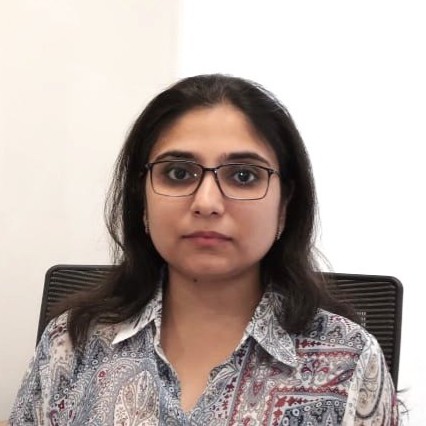
Moderators: Bruno Deval & Christian Phillips
Presenters: Vladimir Kalis, Nikolaus Veit-Rubin, Esther Ruess, Natalia Price, Jerome Melon, Nucelio Lemos, Christian Phillips, Kazuaki Yoshimura
The session started with Vladimir Kalis presenting the Pilsner Modification of laparoscopic sacrohysteropexy, followed by presentations on two novel approaches for pelvic organ prolapse (POP) repair: laparoscopic pectopexy (Gunter Noe) and robotically assisted lateral suspension with mesh (Nikolaus Veit-Rubin). Esther Ruess then presented an interesting video case series on management of six patients with recurrent POP after open sacrocervicopexy. Addressing persistent gluteal pain and recurrent mesh exposure following laparoscopic sacrocolpopexy was presented by Aditi Siddharth et al, followed by presentation of videos on laparoscopic repair of vesico-uterine fistula, laparoscopic colposuspension technique, and laparoscopic fixation of the vaginal cuff to uterosascral ligaments technique by Jerome Melon, Christian Phillips, and Kazuaki Yoshimura respectively. The final presenter, Nucelio Lemos, provided insights in neuropelveology with his video on laparoscopic approach to pudendal and other intrapelvic neuralgias.

Moderators: Angela Rantell & Maura Seleme
Presenters: Virginia Roncatti, Bary Berghmans, Angela Rantell, Ellie Stewart
Dr. Virginia Roncatti began the session by giving an overview of objective assessment of pelvic organ prolapse (POP), including POP-Q. She expounded on the need to avoid ‘iatrogenization’ of menopause, the concept of ‘geripause’, pelvic floor support structures, detailed history taking and physical examination (including diagnosis of sarcopenia that can lead to global muscle deficiency) and described POP-Q examination (including a teaching model using a bottle and plastic bag). Dr. Barry Bergmann gave an update on the non-surgical management of prolapse. Recent RCTs prove effectiveness of pelvic floor muscle training (especially intensive supervised therapy for at least 3 months) in primary and secondary prevention of prolapse as it increases muscle thickness and reduces hiatal size. Screening for POP in primary care and assessment of both voluntary and involuntary muscle contraction is necessary. Robust studies are needed to determine long-term outcomes and the effectiveness of perioperative pelvic floor muscle training.

Moderators: Oksana Shynlova & Gina Northington
Presenters: Marianna Alperin, Maria Bortolini, Bertha Chen, Caroline Gargett, Shayanti Mukherjee, Xiaotong Wu
In the inaugural Basic Science Session, Dr. Chen first described how precursor smooth muscle cells (SMC) derived from human pluripotent stem cells can restore deficient urethral sphincter leak point pressures in animal models. The mechanism of action is SMC regeneration in combination with ECM modulation via elastin deposition and remodeling. Prof. Gargett then spoke about the use of newly discovered autologous endometrial Mesenchymal Stem Cells (eMSC) integrated with specially designed degradable and non-degradable biomaterial in rat and ewe models for prevention and repair of prolapse. Next, Dr. Mukherjee described how the use of fabricated nano meshes implanted with eMSCs can improve mesh integration, cell adhesion, angiogenesis and reduce acute inflammation due to immunomodulatory properties of eMSCs in mice and ovine models. Following this was an interesting study on optimizing the mechanical and paracrine functions of stem cells to promote their differentiation into extracellular matrix and fibroblast cells by Dr. Wu.

Moderator: Jorge Millhem Haddad
Presenter: David Castro Diaz
The ICS Lecture, Intrinsic Sphincter Dysfunction: Lessons Learnt, by Dr. David Castro Diaz was a comprehensive update on ISD evaluation and management. Evaluation is not easy as MUCP and ALPP, on which the diagnosis is based, do not correlate with each other. ISD does not follow an ‘all or none’ phenomenon: all incontinent women have some sphincter deficiency, which is further complicated in those with neurogenic dysfunction. Also, many women with ISD respond to a standard mid-urethral sling procedure. Traditionally, treatment of ISD involves increasing bladder outlet resistance/coaptation. Autologous fascial sling is the most used procedure with objective cure rate of 54-89%. Adjustable sling can be considered in patients in whom more urethral resistance is needed. Bulking agents do not cure but improve continence and QoL. But longer follow-up is needed. Artificial urethral sphincter has high success rate. Unfortunately, the complication and remission rates are also unacceptably high.
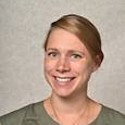
Moderators: Rachel High, Jenifer Byrnes, Annika Taithongchai
Presenters: Peter Rosenblatt, Laura Spinnewijn, Aparna Hegde
Panelists: Stephen Jeffery, Rohna Kearney, Linda Cardozo, Peter Dwyer, Fiona Lindo, Soo Kwon
Dr. Peter Rosenblatt presented a lecture on surgical innovation. He argued that the surgeon’s practical experience and the trainee’s inquisitive mind are both key in moving the field forward. He provided tips on how to introduce new technology into your practice as well as how to make your idea a reality.
Dr. Laura Spinnewijn spoke about innovation in education and surgical training – an important topic both because of the pandemic and the overall decrease in trainee surgical volume. She discussed the four Kirkpatrick levels of training education (reaction, learning, behavior, results) and how to use this as a framework for both development and evaluation of a simulation curriculum.
Dr. Aparna Hegde discussed innovation in global health. In low- and middle-income countries, urogynecologic best practices are not applicable to rural women due to availability and cost. Proposed solutions include prevention (improve maternal health), training local providers (all levels), and integration of prolapse and fistula services.